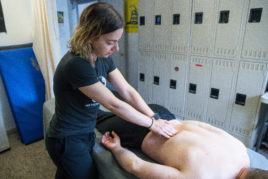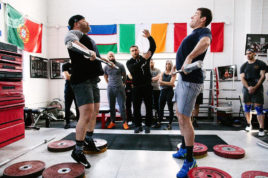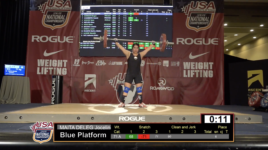All too often athletes and coaches become fixated upon bar path. With the proliferation of both easily recordable and shareable videos and bar tracking apps, there is a seemingly growing list of tools that can be used to analyze lifts. However, it is important to understand the value of good coaching and the purpose of being supervised by a coach with a developed technical eye.
Once the hands grip the bar, the bar becomes an appendage of the body.
Focusing on where the barbell is traveling in relation to your body can be helpful, but zeroing-in on the barbell’s path can result in overlooking larger technical issues that may be present throughout the lift. Focusing on the body and barbell as a whole unit allows for the proper trajectory of the barbell. The bar is an object initially at rest – its path of travel is solely based upon how the body moves it. Once the hands grip the bar, the bar becomes an appendage of the body. Thus, the body needs to move correctly for the barbell apparatus to move along with it.
Commonly, athletes and coaches scrupulously analyze bar path. This narrow analysis puts too acute a focus on a small aspect of the greater whole. Bar path will differ from athlete to athlete depending on their physical structure. What matters the most is the positioning and timing of the body’s positions. If the body moves in the correct pattern, the bar will follow directly along the best path.
While looking at bar path can be useful, it’s more appropriate to focus on the bar’s location in space and how it reaches certain positions. One common error is the barbell drifting away from the body after it passes the thighs or the hip. This error could be a result of the arms and shoulders stiffening as the athlete attempts to accelerate the barbell either too abruptly or aggressively, or the athlete is mitigating leg drive and utilizing too much of the upper body. By only cueing the athlete to keep the bar closer to the body, the root of the problem will not be corrected. An athlete has a greater rate of successfully completing the lifts if they are able to make the technical corrections that address physical positions during the lift, rather than only relying on the analysis of bar path alone.
◆
Daniel Casey
MS, USAW2, CSCS
Owner and Head Coach, NYWA
__________________



